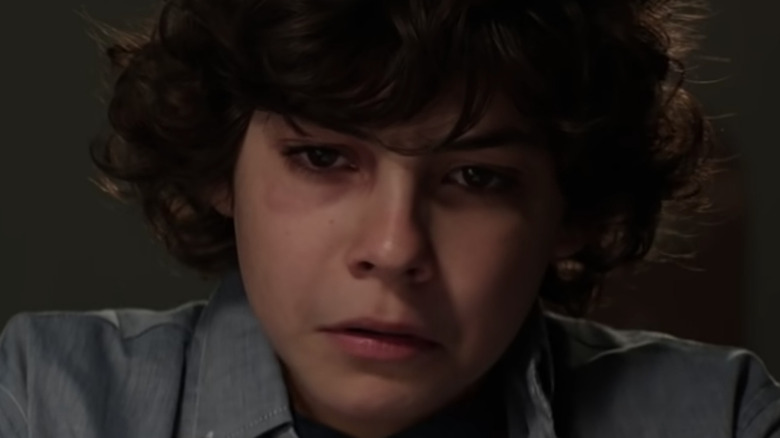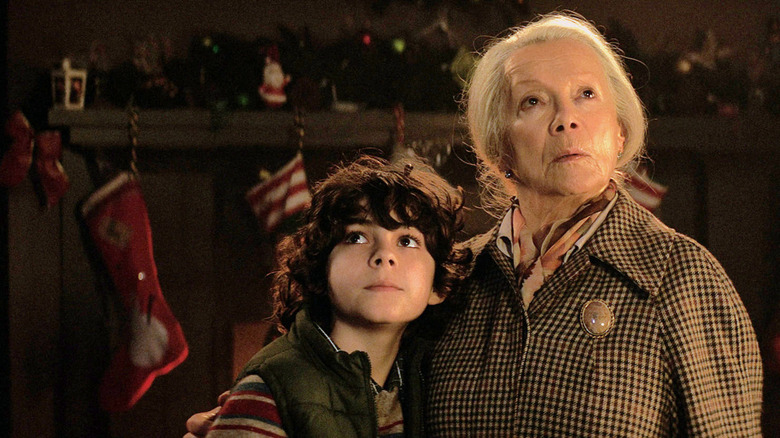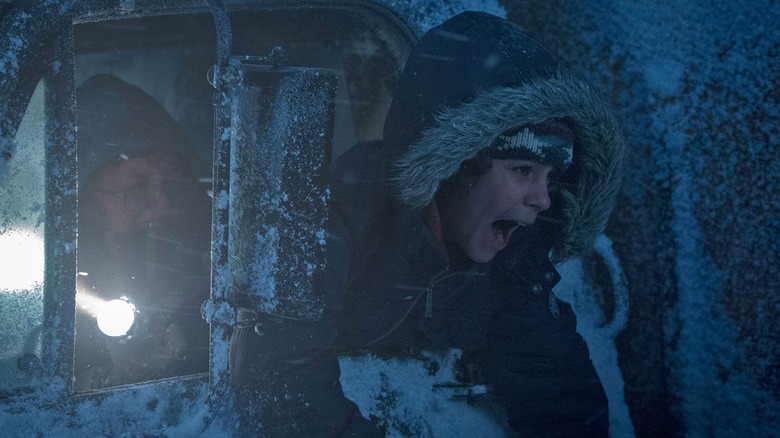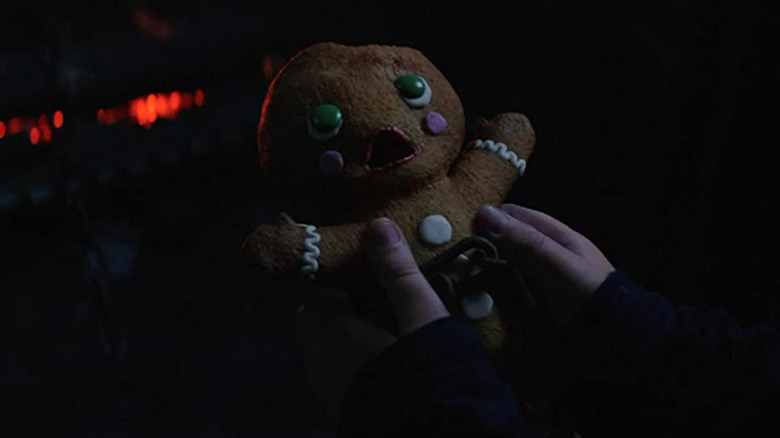The Ending Of Krampus Explained
"Krampus" has become a spooky Christmas staple for horror-comedy fans on the level of "Jack Frost," "Anna and the Apocalypse," and "Gremlins" in the six years since its 2015 release. With its wicked, "Twilight Zone"-esque sense of supernatural horror and its cheerfully sarcastic sense of humor, the movie has a growing legion of fans who consider it a part of their yearly holiday tradition.
The story of the dysfunctional yet still loving Engel family begins with a child's poignant wish and concludes with a double twist ending that might puzzle even the most hardened horror addict. For the confused, we're here to explain just what went down during that snowy holiday weekend that sealed the fates of an entire, Christmas-hating clan, including the one little boy whose holiday spirit was smushed by their lack of holiday joy. Read on to find out who made it through their Christmas Eve battle with Krampus.
Omi's sacrifice explained
The key to surviving Krampus is to never lose your holiday spirit. If you give in to gloom, anger, anxiety, or depression, you will be dragged to hell by Santa's evil funhouse-mirror cloven-footed assistant. That, of course, is what happened to Omi Engel (Krista Stadler)'s family back in the old country. Consumed by the gloom and the pain of life in World War II Germany, her village understandably had no joy, but when even Omi lost her sense of Christmas joy, Krampus arrived to admonish them for their lack of festivity by dragging them all to hell — everyone but Omi, who was left behind with a bell bauble engraved with her name, indicating that the evil spirit would forever have an eye on her to ensure she'd never lose her spirit.
This backstory makes Omi's eventual choice to sacrifice herself to Krampus at the end of the movie all the more poignant. She got away once, but this time, she chooses not to so that she can allow her family to escape.
Max's wish is what brings the wrath of Krampus
Young Max Engel (Emjay Anthony) believes in the spirit of the holidays, but his large extended family does not, and they all refuse to participate with him in their usual traditions due to interfamily tension. When his cousins make fun of him for believing in Santa Claus at his age, Max loses his patience with them, declaring his hated of the family and of Christmas. He eventually tears up his letter to Santa and throws it into the fireplace. That torn-up letter is the impetus for the rest of the movie — it's what beckons Krampus to the Engels.
Note that when Max receives his own bell from Krampus engraved with his name –harkening back to Krampus' own covenant with Omi — it's wrapped in pieces of the torn-up note. By invoking Krampus' wrath by rejecting Santa Claus and the joy of the holiday season, Max has signed his own blood pact with Krampus — one that dooms his family.
Are the Engels in hell?
Or does it really doom the Engels? "Krampus" ends with a twisty conclusion that turns out to be a good news/bad news kind of situation for the family.
After all of the Engels are rounded up by Krampus and his minions, they are thrown into a pit leading directly to hell. Max soon joins them, in spite of the fact that he directly apologized to Krampus for losing his way. But the young boy wakes up suddenly in his own bed the next morning, and he then goes downstairs to see his whole family alive and well. Christmas morning commences, and a chastened Max is once more grateful for his family. But he unwraps a package and sees the bell that Krampus gifted him with the night before. As the camera zooms out on the terrified Engels, we realize that they have been captured in a snowglobe — and that they rest within Krampus' workshop among many similar-looking globes.
So, are the Engels in hell, forever consigned to live in a snowglobe in Krampus' workshop? Or does the huge number of snowglobes in the workshop mean something else?
According to the graphic novel "Krampus: Shadow of Saint Nicholas," the Engels actually aren't trapped in Krampus' workshop forever, nor are they in hell – the snowglobes are monitoring devices that Krampus uses to spy upon those he has spared. They, like the bells given to children who have survived his wrath, are a way for Krampus to make sure everyone is participating in the joy of the season — or else!



